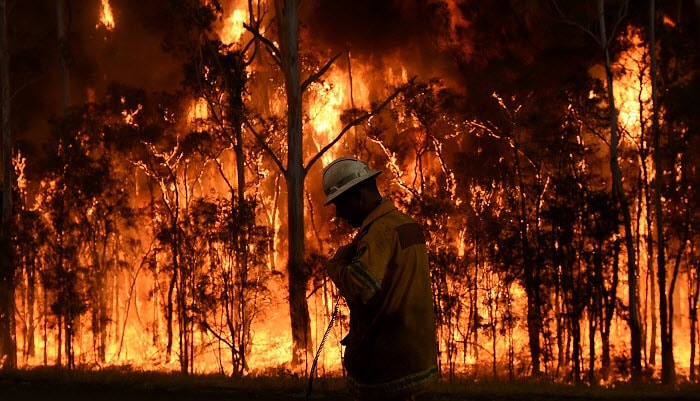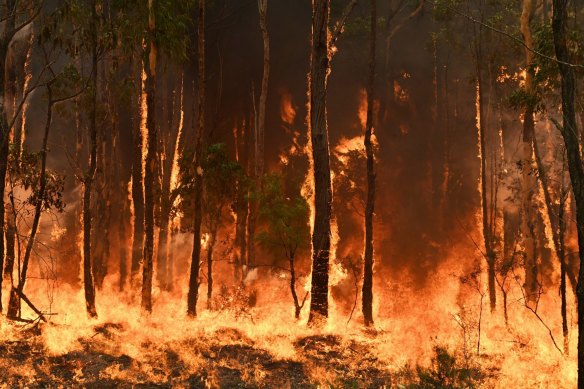BAL Report Principles: Essential Information for Property Owners
BAL Report Principles: Essential Information for Property Owners
Blog Article
Exactly How BAL Report Impacts Bush Fire Security Steps
In the realm of bush fire protection, the Building Assault Level (BAL) report stands as a vital tool that considerably affects the security and durability of buildings in fire-prone locations - BAL Report. The effect of a BAL analysis expands much past plain documentation; it works as the cornerstone for establishing the ideal construction standards and fire security steps essential to reduce the risks presented by bushfires. As neighborhoods face increasingly severe fire periods, recognizing how the BAL report forms these protective actions comes to be critical for homeowners, policymakers, and contractors alike
Understanding the Bushfire Strike Level

Significance of BAL Record Analysis

Furthermore, the BAL record evaluation offers as a foundational action in adhering to legal commitments and requirements connected to bushfire security. Neighborhood councils and authorities usually mandate the submission of a BAL record as component of the preparation and structure authorization procedure to ensure that residential properties are adequately protected versus bushfire dangers. Stopping working to perform a comprehensive BAL report assessment can result in inadequate protection measures, leaving properties prone to ruining bushfire occurrences.
Building Criteria Based on BAL
An extensive understanding of the Bushfire Assault Level (BAL) enables building owners to carry out building and construction criteria customized to their details risk profile. Building and construction criteria based upon BAL are vital in reducing the effect of bushfires on buildings. The BAL score categorizes the possible risk a property encounters during a bushfire on a scale from BAL-Low to BAL-FZ (Flame Zone) Each BAL degree matches to particular construction needs detailed in the Australian Conventional AS3959-2018 Construction of Structures in Bushfire-Prone Areas. Properties categorized as BAL-Low may just click here to find out more require fundamental actions such as clearing particles and preserving yards, while those in greater BAL categories need more durable steps like cinder screens, fire-resistant materials, and sealed home windows. Complying with these building requirements not only boosts the structural durability of the residential or commercial property yet likewise enhances the general security of locals throughout a bushfire occasion. Building owners need to carefully consider their BAL ranking and conform with the corresponding building requirements to properly protect their homes and passengers.
Implementing Fire Defense Procedures
With the foundation of building and construction standards based on Bushfire Attack Degree (BAL) in location, the focus currently shifts towards the sensible execution of fire protection actions to strengthen buildings versus bushfire hazards. Carrying out fire protection measures involves a combination of passive and active methods to improve the durability of structures in bushfire-prone locations. Easy measures include utilizing fire-resistant building products, mounting coal guards on vents, sealing spaces in walls and roofs, and preserving a clear room around the residential or commercial property cost-free from flammable plants. Energetic steps include having firefighting equipment readily offered, anchor such as hoses and water pumps, in addition to creating a defendable area around the building by getting rid of vegetation and having a well-kept yard. Furthermore, creating an emptying strategy and making sure all homeowners recognize emergency situation treatments are essential parts of effective fire security measures. By integrating both passive and energetic strategies, residential or commercial properties can dramatically lower their susceptability to bushfire occurrences and raise the safety of owners.
Safeguarding Houses Against Bushfires
Properly guarding homes versus the destructive effects of bushfires requires a comprehensive and aggressive technique to fire security procedures. Home owners staying in bushfire-prone areas should focus on the implementation of different methods to boost their home's durability against wildfires. One fundamental facet is developing a defensible room around the home by maintaining a clear zone without combustible materials. This consists of consistently trimming plants, getting rid of dead plants, and making certain a risk-free range in between structures and trees. Mounting fireproof roof products can likewise dramatically decrease the danger of cinder attacks and straight flame get in touch with. In addition, sealing vents and voids to avoid ash breach, in addition to incorporating fireproof windows and doors, can help strengthen the home's protection against bushfires. Spending in a dependable water source, such as a well-maintained lawn sprinkler or a devoted water storage tank, is critical for providing water during fire emergency situations - BAL Report. By embracing a positive stance and integrating these safety measures, home owners can substantially boost their chances of safeguarding their homes versus bushfires.
Verdict
Finally, the Bushfire Strike Degree (BAL) record plays a crucial function in determining the necessary protection measures against bushfires. By examining the BAL, construction browse around this site criteria can be customized to reduce the threats and make sure the safety and security of homes in fire-prone areas. Applying fire security procedures based on the BAL record is vital in guarding homes from potential bushfire dangers. It is imperative for homeowners to prioritize BAL analyses and follow recommended building standards to enhance bushfire resilience.
In assessing bushfire danger to buildings, comprehending the Bushfire Attack Degree (BAL) is an important element for implementing effective security procedures. On the whole, a clear understanding of the Bushfire Assault Degree is necessary for applying appropriate defense steps and alleviating the impact of bushfires on properties.

Report this page